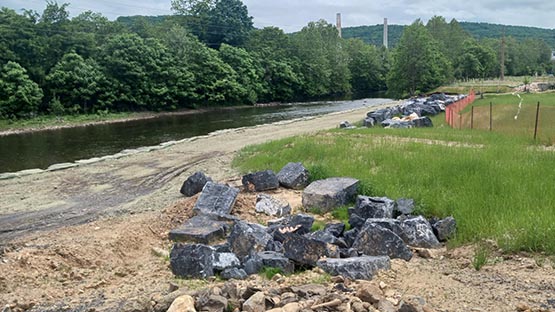
“Road safety is a very important issue for farmers, especially during planting time in spring and summer and fall harvest time,” said M.L. Everett, who grows cotton, peanuts, soybeans, wheat, pumpkins and timber on 1,500 acres in Southampton County. He also raises cattle. He said his large farm vehicles travel mostly on rural, secondary roads, often at night to avoid heavy traffic. Their top speed is around 20 mph.
“Most drivers are respectful, but some get impatient,” Everett said. He noted that even when he uses an escort vehicle with strobe lights and flashers some drivers have tried to go around the farm machinery.
Everett said the road by his farm is 17 feet wide. His grain combine is 17.6 feet wide, and his tractor with planters is 17 feet wide. He said education is key for the safety of farmers and other drivers alike.
“It takes this larger equipment to farm the large acreage necessary to sustain our farm’s profitability,” Everett said. “You can’t farm this amount of acreage with small equipment.”
Sam Rooks, vice president of underwriting and policy services for the Virginia Farm Bureau Mutual Insurance Co., offered several safety tips for farmers and motorists on rural roads.
“Virginia law requires that all farm tractors and self-propelled farm machinery that typically travel less than 25 mph display a triangular slow-moving vehicle emblem on the rear of the vehicle when traveling on the public highway any time of the day or night,” Rooks said. The emblem helps make equipment more visible to approaching drivers.
Motorists who see an SMV emblem on equipment ahead of them should slow down to the equipment’s speed immediately. Before attempting to pass—never in a no-passing zone—determine whether the equipment operator is preparing to make a turn.
Rooks noted that the closure time between a car traveling at 60 mph and a farm vehicle traveling at 10 mph is only a few seconds. Consequently, in matters of rural road safety, a little patience goes a long way.










